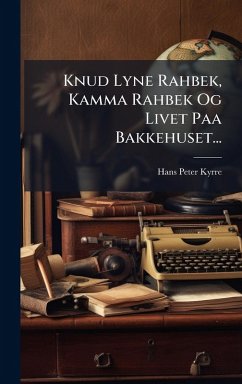This book delves into the lives of Knud Lyne Rahbek and Kamma Rahbek, key figures in Danish literary history, and their home, Bakkehuset, which served as a vibrant cultural hub in the late 18th and early 19th centuries. It offers an intimate portrait of their personal lives, relationships, and the intellectual circles they fostered. Through meticulous research, the author illuminates the significance of Bakkehuset as a meeting place for artists, writers, and thinkers who shaped Danish literature and culture. Explore the rich tapestry of Danish literary life during the Golden Age through the stories of Knud and Kamma Rahbek. Discover how their hospitality and intellectual curiosity created a unique environment that nurtured creativity and dialogue. This is a valuable resource for anyone interested in Danish history, literature, and the cultural significance of literary salons. This work has been selected by scholars as being culturally important, and is part of the knowledge base of civilization as we know it. This work was reproduced from the original artifact, and remains as true to the original work as possible. Therefore, you will see the original copyright references, library stamps (as most of these works have been housed in our most important libraries around the world), and other notations in the work. This work is in the public domain in the United States of America, and possibly other nations. Within the United States, you may freely copy and distribute this work, as no entity (individual or corporate) has a copyright on the body of the work. As a reproduction of a historical artifact, this work may contain missing or blurred pages, poor pictures, errant marks, etc. Scholars believe, and we concur, that this work is important enough to be preserved, reproduced, and made generally available to the public. We appreciate your support of the preservation process, and thank you for being an important part of keeping this knowledge alive and relevant.
Bitte wählen Sie Ihr Anliegen aus.
Rechnungen
Retourenschein anfordern
Bestellstatus
Storno

